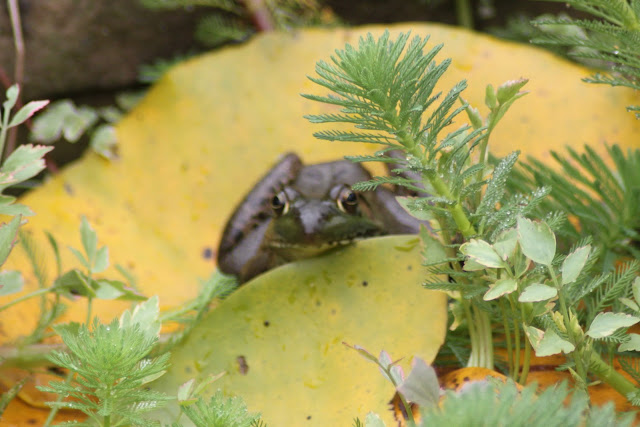Dexter the horrible donkey is helping to thin out one of the gardens.
One Cleome flower actually survived for weeks inside Dexter's fence.

Great cover for the wildlife.
As of October 15th, 2011 a cold day, with rain so much in the past week. I still had Monarchs around. They should have tried to get going South a bit earlier. Their migration takes 2 months to go about 2500 miles to Mexico. If they linger too long they won't be able to make the journey, because they are unable to fly in cold weather. They over winter in the Oyamel fir forests which are in the mountains of Mexico. Scientists are baffled how they know this route of their ancestors.
Our 20 year old Persian cat, "Mama" Kitty died April 13, 2011 and I had to end up burying her myself under this Serviceberry tree. She was a wonderful cat but never wanted to be outside. Her only fault was she wasn't a hunter. Thinking her cat food down in the basement was being eaten daily by our big dog, I kept refilling her bowl which was located 2 feet from an opening under my basement stairs that was filled with clutter. One night I noticed a "mouse" peeking out from under my dryer, well it was no mouse. It was a rat. Here there was a huge family of rats living under the steps, only had to sneak out a few feet and eat tons of cat food daily. They left no droppings anywhere in the utility room, so I had no idea they were there. Well they had to be disposed of, they can cause a health risk, so sad to kill things.
Dense is better. Bunnies can hide from hawks.
I just can't keep these Maximillian Sunflowers tied up. They are a perennial and grow at least 10-15 feet high. I have to figure out what to do with them. Hardy and a late bloomer, but too high.
I bought this pink grass in June and by September it was over 10 feet tall.
Planted the grass in the middle of June, this picture was taken in July 2011.
Now here is the tall grass which is almost 12 feet high by September.

















































